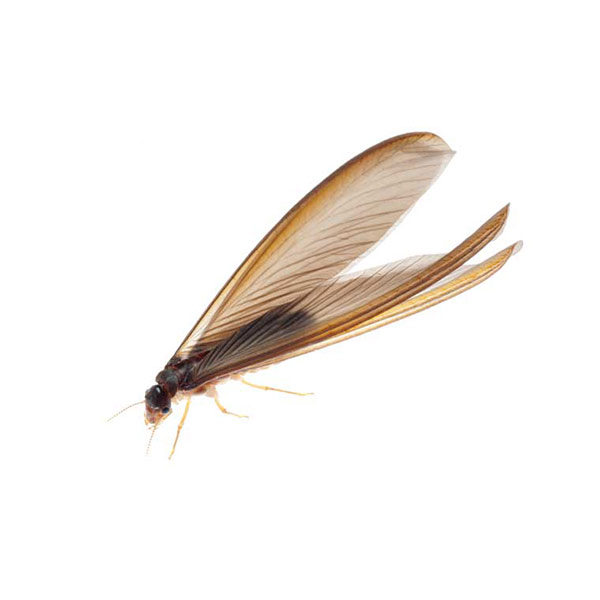
Drywood Termite
Category Termites
Actual Size: ¼ to ⅜”
Characteristics: Color, size, and appearance can vary significantly within the species based on caste and life cycle. Swarmers can be told apart from ants by their equal-sized sets of wings.
Legs: 6
Antennae: Yes
Wings: Alates/swarmers have wings.
Habitat: As their name suggests, these termites prefer dry and intact wood. Unlike other termite species, they prefer wood that is above the ground and do not need contact with soil to survive.
Habits:
- Can survive in dry environments with minimal access to water.
- A mature drywood termite colony may only contain a few thousand individuals.
- Drywood termites aren’t as common as subterranean termites.
Drywood Termites in Florida
Though drywood termites aren’t as common as other species in the United States, these insects are highly destructive and can cause significant property damage over time. These pests are a particularly big problem in warm climates with mild winters, but they can survive pretty much anywhere they can access plenty of food and shelter. They build their colonies entirely within wooden structures, which means that they don’t leave behind the usual signs of an infestation such as mud tubes. Since it can be hard to tell if you have drywood termites, the colonies can cause a lot of damage before they’re discovered and professionally treated.
Drywood Termite Habitat
Drywood termites are a unique species because they thrive in relatively dry environments. While subterranean termites require soil contact and significant moisture to survive, drywood termites establish their colonies directly within the wood they infest. This wood can range from structural timber in homes to furniture and even picture frames. Because they don’t need to return to the soil, they can live and feed in wood that’s far from the ground, making them particularly insidious pests in attics, walls, and other high, dry places.
Drywood Termite Behaviors, Threats, or Dangers
While drywood termites don’t pose a direct health risk and they’re not known to be aggressive, infestations can be incredibly destructive. Unlike termites that build visible mud tubes, drywood termites live entirely within the wood they infest, making early detection challenging. As they chew through structural timber, furniture, and other wooden objects, they compromise the integrity and strength of these materials, leading to costly repairs and potential safety hazards.
Handling a drywood termite infestation can be challenging, especially if you aren’t sure how far the infestation has spread. If you think you may have termites, it’s best to call a professional exterminator for help.
